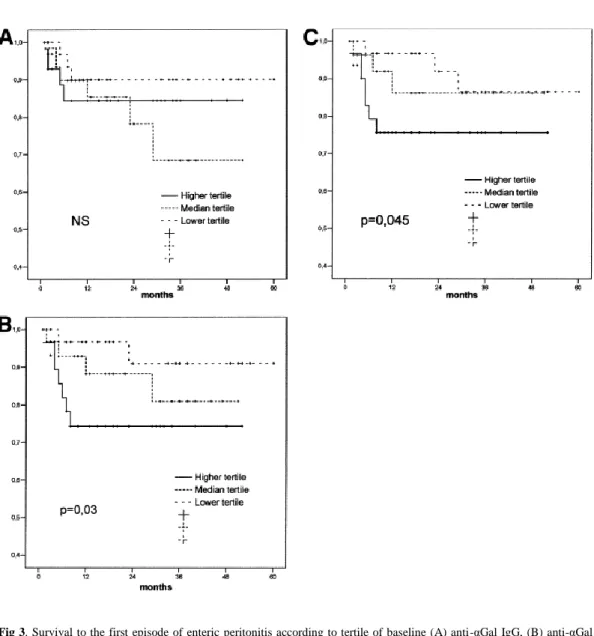TítuloSerum levels of anti alphaGalactosyl antibodies predict survival and peritoneal dialysis related enteric peritonitis rates in patients undergoing renal replacement therapy
Texto completo
Figure




Documento similar
In fact, when we compared modalities across each peritoneal phosphate transport category, we found that PD modality is a significant determinant of phosphate handling, in subgroups
Es, por tanto, objeto de este trabajo identificar en la literatura las causas y factores de riesgo que producen peritonitis en los pacientes en tratamiento de
Restless legs syndrome in patients with high serum ferritin and normal iron
Circulating interleukin 6 and albumin, and infliximab levels are good predictors of recovering efficacy after dose escalation infliximab therapy in patients with loss of response
(B) A normal peritoneum shows baseline VEGF receptors and co-receptors expression, and normal VEGF and Sema-3A levels are secreted at the peritoneal cavity. During continuous
The main findings are high sTWEAK levels in peritoneal effluents during human peritonitis, a correlation of peritoneal tissue Fn14 receptor expression with peritoneal injury
We have now explored the circulating levels of BPS in end- stage kidney disease (ESRD) patients on dialysis and the impact of commonly used dialysis membranes.. Additionally, we
We know that patients with kidney disease have elevated serum levels of BPA and that some of the effects of BPA in laboratory ani- mals also appear in uraemic patients on
